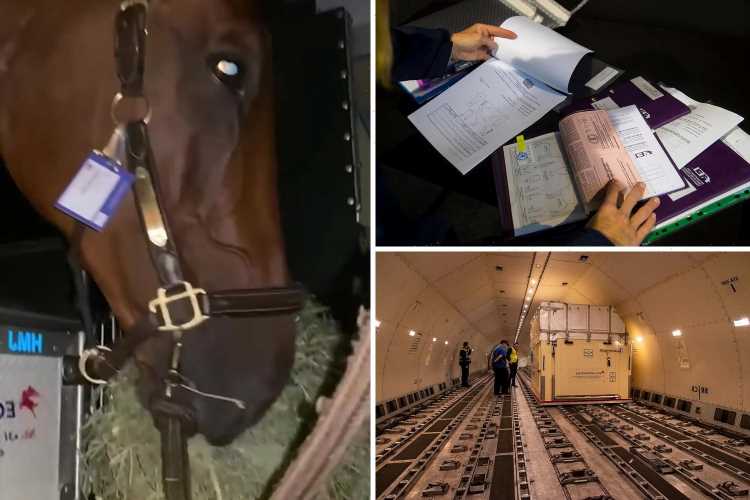OLYMPIC athletes have gone through a very different process to reach the Games in Tokyo, but the logistics of flying hundreds of horses out to Japan is on a significantly grander scale.
Some 247 horses will take part in the six events across three disciplines at Tokyo 2020, with a further 78 involved in the Paralympics.
The process of getting them all into the most strictly-organised Games in living memory has been intense.
Teams are already planning how they will operate at the 2024 Paris Olympics and in 2028 at Los Angeles.
But the unique Tokyo Games led to teams being uncertain if they were even going in the first place.
For the United States squad, this meant 'six months of planning had to be done in six weeks', as U.S. Equestrian’s sport director Will Connell told Forbes.
The US team in particular have had to shake up their plans, sending the team to Japan via a camp in Europe due to the huge distance between the countries.
Alongside the nine Olympic and three Paralympic riders, the Americans sent a team of vets, grooms, farriers, physios and more – with a total of 76 members knocked down to 64 due to Covid-19 restrictions.
To fly to Japan, each country had to ensure their horse's passport was fully up to date with their age, vaccinations and other details.
Like humans, the horses were forced to spend time in quarantine among their support staff before being allowed to head to Tokyo.
A vet then examined each horse as they arrived at the airport, ready for a short walk to aid their circulation before a long wait at the export area.
Around seven hours later, they were loaded into stalls which were then lifted onto the cargo plane.
BETTING SPECIAL – CLAIM £180 IN FREE BETS FOR THE OLYMPICS
Typically, horses travel at three per stall but these Olympic animals were granted extra space and only two stood in each.
Tonnes of equipment and food were then loaded on with haylage, a special conserved hay that contains more moisture, the in-flight meal of choice.
Plenty of water was available to each horse with dehydration a major potential issue, and vets and grooms kept them well looked after.
Air conditioned stalls also helped their comfort with hay chewing a useful aid for drops in pressure as the plane ascended and descended.
Pilots also made sure to provide a steady take-off and landing, as to not upset the passengers.
British Eventing Team vet Liz Brown told the RadioTimes: “The pilots will control a more gradual take off and a slower landing to a typical flight.
“When you’re on a passenger plane you’ll experience a positive landing where they brake quite hard, but with horses they do a longer landing so they don’t feel that sudden deceleration.”
The long flight, which measured 17 hours across 5,700 miles plus a likely refuelling stop, was proceeded by the wait that human passengers are very familiar with upon arriving in another country.
Passport and vet checks were conducted before the horses were moved by air-conditioned lorry to their own Olympic village in Tokyo.
And then the Games began, with Germany taking gold in both the team and individual dressage.
The next fortnight sees the two eventing and showjumping competitions take place at Baji Koen Equestrian Park.
Team GB scooped bronze in both dressage events and Ben Maher will be hoping to follow in Nick Skelton's stirrups to secure showjumping gold.
🥇 TOKYO OLYMPICS LIVE: All the latest from the Games with our live blog
🥇 WHAT'S ON TODAY? Best bits to watch at the Olympics and UK times for your favourite stars
Source: Read Full Article






